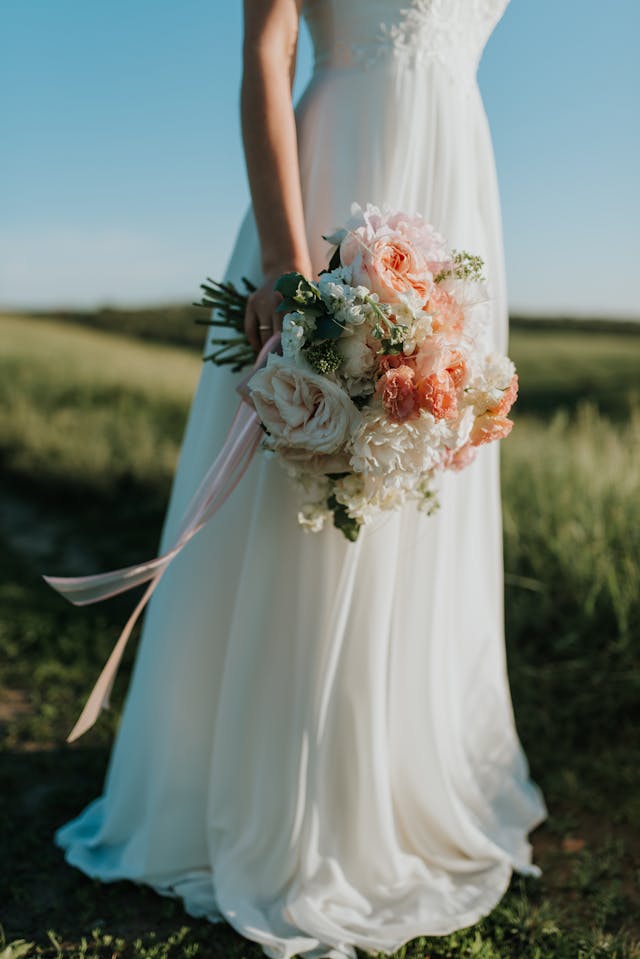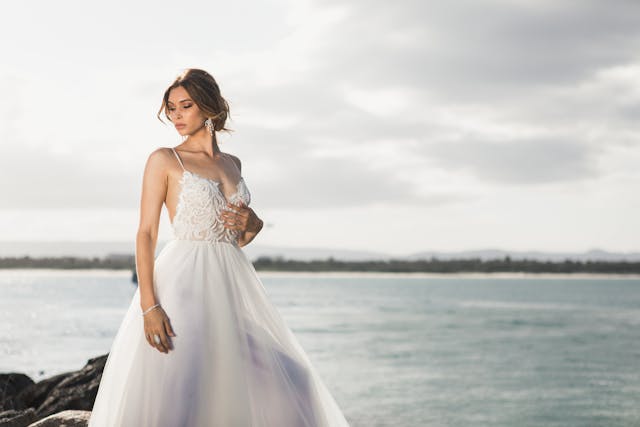A veil can be one of the most captivating details of a wedding ensemble, acting as a symbol of grace, heritage, and individuality. Yet, for many brides-to‑be, selecting the right piece can quickly evolve from an exciting prospect into a puzzling challenge. Veils vary in length, design, and fabrication, making it essential for each person to find a style that complements both their dress and the overall theme of their celebration. From long, flowing silhouettes that recall timeless traditions to sleek, minimalist options designed for contemporary occasions, the sheer range available can overwhelm even the most confident shopper. Understanding the different options and knowing how to match a veil to both a dress and a venue can transform this decision from a source of stress into an enjoyable part of planning a wedding. By focusing on fit, fabric, and feel, every person can find a piece that suits their taste and captures the emotion of the moment when it is unveiled for the first time.
 Among the first questions a bride must ask herself is how long she wants the veil to be. The length can range from a delicate birdcage style that rests just over the eyes, to a cathedral-length piece that gracefully follows the train of a dress. The veil length can dramatically affect how the dress is framed, and it can shift the overall vibe of the bridal silhouette. A long veil imbues a sense of timeless beauty and makes a statement in formal venues like churches or castles. Shorter styles often suit more intimate celebrations or rustic settings, allowing the wearer greater freedom of movement. Whatever the choice, making sure the veil feels like a natural extension of the attire can transform the ensemble into a seamless, captivating whole. To explore a variety of styles and find the right one for your special day, many brides have found success by browsing trusted collections online, such as the range available for the bridal veil that captures countless moments of beauty and sentiment for countless couples every year.
Among the first questions a bride must ask herself is how long she wants the veil to be. The length can range from a delicate birdcage style that rests just over the eyes, to a cathedral-length piece that gracefully follows the train of a dress. The veil length can dramatically affect how the dress is framed, and it can shift the overall vibe of the bridal silhouette. A long veil imbues a sense of timeless beauty and makes a statement in formal venues like churches or castles. Shorter styles often suit more intimate celebrations or rustic settings, allowing the wearer greater freedom of movement. Whatever the choice, making sure the veil feels like a natural extension of the attire can transform the ensemble into a seamless, captivating whole. To explore a variety of styles and find the right one for your special day, many brides have found success by browsing trusted collections online, such as the range available for the bridal veil that captures countless moments of beauty and sentiment for countless couples every year.
Material and quality matter: Another crucial consideration when choosing a veil is the quality and nature of its fabric. Veils can be made from tulle, silk, lace, and a range of blends that suit different occasions and dress styles. Tulle is the most common option, providing a soft, ethereal look that captures light beautifully and suits a range of dress fabrics from satin to crepe. Silk veils, a more luxurious option, have a natural weight and lustre that can be ideal for minimalist gowns. Meanwhile, lace appliqués can imbue a veil with a vintage charm, making it a popular choice for bohemian or classic wedding styles. The quality of a veil is felt in its drape and its ability to maintain its shape throughout the ceremony and reception. Investing in a piece made with precision ensures a better fit, allowing the veil to move naturally and elegantly as the bride progresses down the aisle. Considering this can make a significant difference in comfort and overall satisfaction throughout the day, allowing the focus to rest upon the moments being shared, not upon any concern about the fit or feel of the veil itself.
Complementing the dress design: The right veil serves as a bridge between a bride’s dress and the rest of the wedding ensemble. The silhouette of the gown can guide this decision, making sure that every piece works together. A sleek, minimalist dress often shines when paired with a longer veil that adds an element of softness and drama. Conversely, an elaborate, heavily embellished dress may be best complemented by a simpler veil that allows its design to remain the star. Certain veil styles work particularly well with certain dress shapes: a fingertip veil can balance a ballgown, a chapel-length veil can add grace to an A‑line dress, and a birdcage veil can capture a sense of vintage flair when paired with a tea-length dress. Seeking harmony between the veil and the dress can prevent any clash of textures or competing design elements. The right balance creates a beautiful, seamless picture from every angle and every step down the aisle, making the veil an extension of the dress, rather than a standalone accessory. Considering this from the early moments of planning can save time and uncertainty closer to the wedding date, making every fitting an exciting step closer to the final reveal.
Location and theme consideration: The setting of the wedding can also have an influence upon the veil’s design and length. A grand cathedral or historic venue almost begs for a longer veil, allowing its soft folds and delicate details to capture the richness of the surroundings. Meanwhile, an intimate garden gathering or a rustic barn wedding might suit a shorter veil or even a veil adorned with flowers, making it a more natural extension of the scene. The veil can mirror the beauty and character of the venue, acting as a piece that connects the theme and the attire. Considering how a veil can respond to its surroundings allows the bride to feel confident in every space she occupies, making sure that every moment shines as bright as the vows exchanged. In the end, it is this attention to theme, space, and attire that allows a veil to evolve from a piece of fabric into a cherished symbol of a deeply personal and memorable chapter in life’s journey, making every second and every glance down the aisle an image to treasure for countless years to come.
